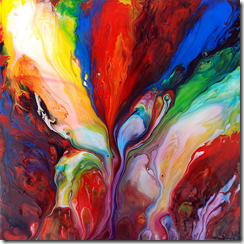 A week ago, Tim Leberecht wrote a valuable piece in Fortune about entrepreneurs and artists, what entrepreneurs can learn from artists. His article, and the most important point, defies logic, and goes against the grain of everything that entrepreneurs are told by do-good advisors, VCs and board members. Here’s my version of the single most important take-away.
A week ago, Tim Leberecht wrote a valuable piece in Fortune about entrepreneurs and artists, what entrepreneurs can learn from artists. His article, and the most important point, defies logic, and goes against the grain of everything that entrepreneurs are told by do-good advisors, VCs and board members. Here’s my version of the single most important take-away.
Artists by nature, create. Entrepreneurs, also create. Perhaps more than artists, entrepreneurs are lured by the traditional metrics of success – nearly all of which stamp out the creativity and innovation that brought the entrepreneurs to the place she has achieved.
Entrepreneurs and Artists
Distraction by the natural instinct to grow the organization by investment over organically acquiring customers is inevitable. In the entrepreneur’s race to beat the competition, the lure of funding from angels, VCs and other sources is very attractive. On one hand, by accepting funding, founders can eat and pay rent. On the other hand, the fear of failure and the pressure of the looming “out of cash curve” are no longer as intense. While it validates the entrepreneur’s idea to have an investor take this level of interest, it likely also reduces the original drive the founders had to innovate, create and build.
Stay creative as long as you can. Doing so will reduce the financial dilution you incur when everyone wakes up and sees that you have customer, and wants a piece of your action. Invest in marketing and business development so that cash-flow reduces the desperation for money. Once you have cash-flow and customers, the table turns and multiple investors must fight desperately to convince you to choose them to invest in you. It’s a much better feeling like being an artist watching bidders in a feeding frenzy over her artwork at auction.
Shifting to Mainstream
As you shift from early adopter customers to more mainstream, the demands on your team for new and additional value (features and capability) will increase, and split across different paths. Your creative genius, like an artist, must stay focused. Some of the early Andy Warhol work is uncharacteristic. He tried a few things that were not aligned with his primary style. Nearly every artist experiments, but eventually gets back to their focus. Like an artist, the entrepreneur must stay true to her vision of the future for the solution they are creating and delivering. Their mission must also stay focused.
To lose sight of the original objective or to take a detour to support a specific early adopter with a feature is exceptionally risky. Anything outside of the original vision, allows an outside competitor to quickly learn all you have learned and steal your idea and your market – merely by being focused.
Stay the Course
It is an incredible drain on founders and distraction to the business, to do fundraising. Creativity and innovation suffer, as will productivity to complete the product or service being developed. Don’t allow your creativity and innovative spirit to be crushed.
Entrepreneurs must control the urge to listen to everyone. VCs, outside advisors and even board members will do their best, with good intent, to accelerate success by driving along traditional business metrics. It’s all they know – their interest is shortest time to ROI. Contrary to what the entrepreneur’s heart wants to think, VCs and investors are in it for the money. Ultimately, they do not have the same passion for the opportunity, or impact that the founders may have in their minds and hearts.
Recognize this, and it is easier to be an entrepreneur and artist in one being.
Leave a comment and share with other readers your story about the artistic side of your entrepreneurial experience.
Image credit: markchadwickart via photopin cc










How true: Entrepreneurs are lured by the traditional metrics of success, especially those that were classically trained in Corporate America before escaping. Good analogy re: artists. Reminds me of an old post I would like to share with you Andrew: http://smartketingreflections.blogspot.com/2009/04/lessons-from-great-artists-architects.html